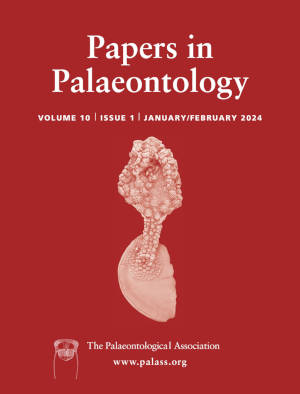Article: Archaeichnium haughtoni: a robust burrow lining from the Ediacaran–Cambrian transition of Namibia
Publication: Papers in Palaeontology
Volume:
10
Part:
1
Publication Date:
2024
Article number:
e1546
Author(s):
Katherine A. Turk, Mikaela A. Pulsipher, Eugene Bergh, Marc Laflamme, and Simon A. F. Darroch
DOI:
10.1002/spp2.1546
Abstract
Abstract Following various assignments to Archaeocyatha, worm tubes, and finally incertae sedis, the enigmatic Ediacaran–Cambrian taxon Archaeichnium haughtoni has in recent years come to represent somewhat of a wastebasket taxon to which the indeterminate tapering tubular forms common across this interval are assigned. This ‘catch-all’ status has been aided in part by both suboptimal specimen photography and the temporary loss of the holotype after its second redescription in 1978. Recent rediscovery of the A. haughtoni holotype in the collections of the Iziko South African Museum in Cape Town has enabled a much-needed re-assessment of this critical and cryptic taxon, with results suggesting that this material from the latest Ediacaran or earliest Cambrian of Namibia is among the earliest fossil record examples of marine worm burrow linings, and the oldest examples of linings robust enough to withstand exhumation and current transport. These traces indicate the emergence of this important animalian ecosystem engineering behaviour closer to the Ediacaran–Cambrian boundary than previously thought.
